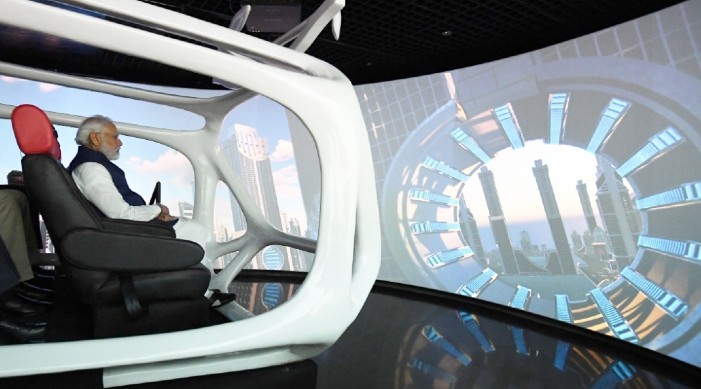In Maharashtra and Haryana, voters showed they are wise enough to differentiate between national and local issues
Since the return of Prime Minister Narendra Modi to power this year with a massive mandate, there have been murmurs about the health of democracy in India and across the world, with various international newspapers writing editorials and devoting space on op-ed pages to this issue. After all, India is the largest democracy in the world, so obviously matters related to the country should concern the world.
BJP failing to fulfill targets
However, the results of this week’s state elections in Maharashtra and Haryana and various by-elections spread across 17 states counter the arguments that Indian democracy is facing a severe challenge under Modi’s second regime. In both states, although the Bharatiya Janata Party (BJP) is set to return to power, the results are intriguing – quite different from the general elections held earlier this year.
In Maharashtra, the second-largest state in terms of gross domestic product and number of seats in both houses of the Indian Parliament, the BJP, got only 105 seats in the state election, a reduction. It had been hoping for at least 145 seats on its own, the majority mark required in the state assembly of 288 seats. So for the next five years, the party has to rely more on its ideological regional ally Shiv Sena, which bagged 56 seats.
Meanwhile in Haryana, the BJP also failed to achieve the required majority mark of 46 seats, stopping at 40. Nevertheless, the party is expected to form the government by garnering the support of Independents in the house of 90 seats.
State results unlike general elections
It is fascinating that within six months, the BJP has seen its votes decrease at a time when the opposition was still fumbling from the shocks of the general elections. The main opposition Indian National Congress (INC) almost gave a neck-and-neck fight to the BJP in Haryana and was finally able to garner 31 seats – in a state where it was completely wiped out in the general with the BJP roping all 10 Lok Sabha (lower house of Parliament) seats.
Similarly, in Maharashtra, where the BJP-Shiv Sena alliance garnered 41 out of 48 Lok Sabha seats, despite expectations of a decimation of the opposition coalition led by the INC, which includes its major ally the Nationalist Congress Party, the alliance managed to win 102 seats – with the NCP bagging 54 seats while the INC grabbed 45 and the rest were taken by small allies.
Voters choosing their own issues
This shows that Indian voters, who are smart enough to differentiate between state and general elections, exercised their franchise based on state factors. It must be noted that the BJP’s campaign was centered all along on strong nationalism – with the issues of removing the special status of Kashmir, implementation of the National Register of Citizens (an exercise to determine illegal immigrants in the state of Assam) all over the country and even attacking Pakistan during election rallies.
No doubt whatever Pakistan is doing related to Kashmir can never be supported, but these were state elections, not Lok Sabha polls. The reality is that despite the BJP’s forcing the issues related to nationalism, the electorates were wise enough to reject them. Not only this, the voters also turned down the BJP’s many turncoat candidates – gained through poaching from opposition parties.
Signs of a maturing democracy
What do the results mean? They clearly indicate a well-functioning democracy, where the voters have the final say, not the ruling party. No doubt every ruling party, irrespective of color and ideology, always tries to influence the voters, but it is the duty of the electorates to vote based on their conscience.
The context of the Lok Sabha elections was different, and Modi got a strong mandate mainly due to his social-welfare schemes that reached the rural areas better than the record of the previous regimes. Also certainly, there was a lack of a proper alternative with better narratives from the opposition side. But in the state polls, Modi was not the main factor. Here, the electorates were looking for local leadership, and in Maharashtra, they found veteran leader Sharad Pawar, chief of the NCP and also the ex-chief minister of the state, and in Haryana, the voters were divided between ex- chief minister Bhupinder Singh Hooda of Congress and the chief of the state’s new regional party Jananayak Janata Party (JJP) Dushyant Chautala – great-grandson of former deputy prime minister Devi Lal.
Apart from the state elections, the results of the by-elections held across 17 states, quite different from the Lok Sabha elections, also show the voters’ preference for local factors.
Ground reality counters negative prophecies
What should be the characteristics of a mature democracy? The answer is that voters should be able to understand how to exercise their franchise properly.
In India, despite prophecies of doomed democracy, voters are showing characteristics of a maturing democracy. This tendency was even noticed in Odisha, a state that held assembly elections this year simultaneously with the Lok Sabha polls. In the Lok Sabha polls, the BJP gained seats but performed badly in the state assembly elections. Nevertheless, many chose to ignore the developments in Odisha and instead there were forecasts from a section of Indian liberals and a section of international media that India’s democracy is facing a severe threat from majoritarian politics led by Modi and his BJP, drawing similarities to Recep Tayyip Erdogan’s Turkey and Viktor Orban’s Hungary.
But the ground reality suggests otherwise. The electorates of India are rather becoming wise enough to determine the factors for by-elections, state and general elections and thus are able to distinguish among the various elections, as required in a maturing democracy. The state elections in Maharashtra and Haryana and various by-elections only confirm this.
 Contact Us
Contact Us  Subscribe Us
Subscribe Us









 Contact Us
Contact Us
 Subscribe
Subscribe
 News Letter
News Letter

